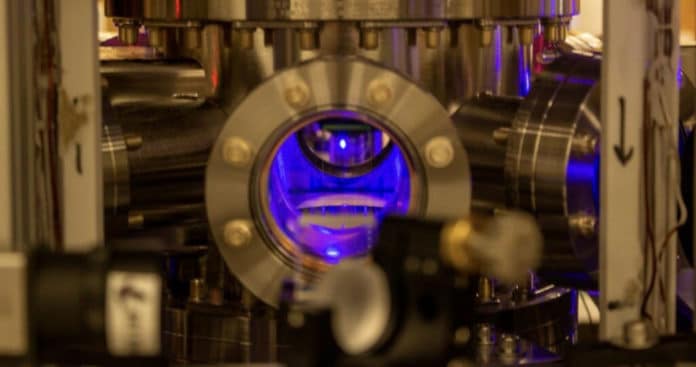Atomic clocks are clocks used to track the resonances of atom frequencies, usually the atoms of cesium or rubidium. The clocks work by tracking the energy level of electrons.
Atomic clocks take advantage of a fundamental property of atoms: An electron either emits or absorbs light with frequency while changing its energy level. This frequency is identical for all atoms of a particular element.
Recently, physicists at the University of Wisconsin–Madison announced the discovery of one of the highest-performance atomic clocks ever. They named their instrument an optical lattice atomic clock.
Their newly developed instrument can track differences in time with enough precision, equivalent to losing just one second every 300 billion years. It is the first example of a ‘multiplexed’ optical clock, where six separate clocks exist in the same environment.
Scientists could test ways to search for gravitational waves thanks to its design. It could also detect dark matter and discover new physics with clocks.
Shimon Kolkowitz, a UW–Madison physics professor and senior author of the study, said, “Optical lattice clocks are already the best clocks in the world, and here we get this level of performance that no one has seen before. We’re working to both improve their performance and to develop emerging applications that are enabled by this improved performance.”
Unlike an optical atomic clock that uses the most sophisticated laser to keep time, this new optical lattice atomic clock uses a relatively lousy laser.
Physicists also reported about the multiplexed clock in their new study. Within this multiplexed clock, strontium atoms can be separated into multiple clocks arranged sequentially in a vacuum chamber. They just used one atomic clock to identify whether their laser could reliably excite electrons in the same number of atoms for one-tenth of a second.
The team shone a laser on two clocks in the chamber simultaneously and compared them. They found that the number of atoms with excited electrons stayed the same between the two clocks for up to 26 seconds.
The results indicate that the scientists could run meaningful experiments for much longer than their laser would allow in a normal optical clock.
Kollwitz said, “Normally, our laser would limit the performance of these clocks. But because the clocks are in the same environment and experience the same laser light, the effect of the laser drops out completely.”
The team next determined how precisely they could measure differences between the clocks. For this, they ran their experiment over a thousand times, measuring the difference in the ticking frequency of their two clocks for a total of around three hours.
They found that the ticking was slightly different because the clocks were in two slightly different locations.
Scientists could detect a difference in ticking rate between the two clocks that would correspond to them disagreeing with each other by only one second every 300 billion years — a measurement of precision timekeeping that sets a world record for two spatially separated clocks.
In another study, a group of scientists led by JILA detected a frequency difference between the top and bottom of a dispersed cloud of atoms about ten times better than the UW–Madison group. Their results, obtained at one-millimeter separation, also represent the shortest distance to date at which Einstein’s theory of general relativity has been tested with clocks.
Kollwitz said, “The amazing thing is that we demonstrated similar performance as the JILA group despite the fact that we’re using an order of magnitude worse laser. That’s significant for a lot of real-world applications, where our laser looks a lot more like what you would take out into the field.”
Journal References:
- Zheng, X., Dolde, J., Lochaber, V. et al. Differential clock comparisons with a multiplexed optical lattice clock. Nature 602, 425–430 (2022). DOI: 10.1038/s41586-021-04344-y
- Related: Tobias Bothwell, Resolving the gravitational redshift in a millimeter-scale atomic sample, Nature (2022). DOI: 10.1038/s41586-021-04349-7
